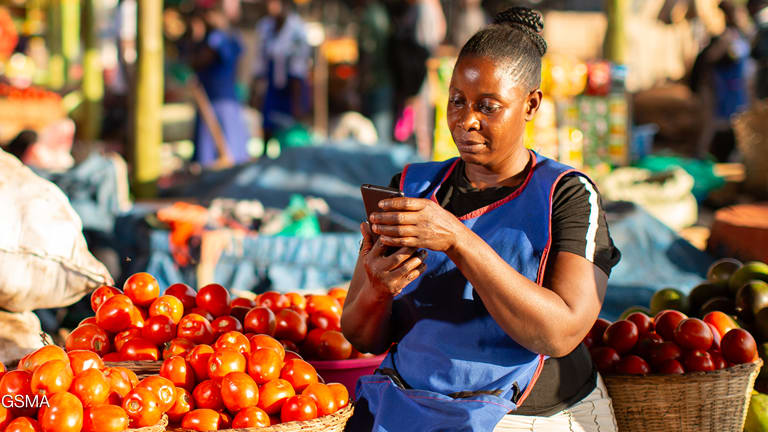
Cultural and social norms are one of the most significant, yet largely ignored, barriers preventing women and girls accessing mobile phones and the internet. In some cases they have even resulted in death and rape.
However, current efforts to bridge the digital gender divide are failing to prioritize initiatives which seek to understand, and ultimately, challenge these powerful norms, according to gender tech experts interviewed by Devex after an event hosted by technology convening nonprofit Technology Salon in Washington, D.C.
1.7 billion females in low and middle income countries are without mobile phones.
—On average, women are 25 percent less likely to be online than men and this increases to 43 percent in sub-Saharan Africa, according to a 2013 study, while global average for mobile phone ownership show women are 14 percent behind men. In South Asia, the gap is 38 percent according to the latest figures from the global association of mobile operators, GSMA.
This means 1.7 billion females in low and middle income countries are without mobile phones. Furthermore, the gender gap appears to have widened in recent years according to a report by the International Telecommunication Union at the United Nations, which found that the internet user gender gap grew from 11 percent in 2013 to 12 percent in 2016.
Furthermore, villages in three states in India have banned women and girls from using cell phones, due to fears it will lead to adultery and also distract from their studies. In India, a girl was burned alive by men because she refused to stop talking on her phone, an act which they considered to be immoral. In Pakistan, a woman who had a following on social media was killed by her brother for posting controversial content, and a woman in Morocco was stoned to death for simply owning a mobile phone.
“The real reason we can’t get [the] last several hundreds of millions of women online — it comes down to fact there are people in their community who don’t want them online.”
— Revi Sterling, deputy chief of party, NetHopeA 2015 GSMA report confirms what these stories indicate — that social norms have a profoundly limiting impact on their use of ICTs, including family resistance to women and girls using phones. However, to date, information and communication technologies initiatives have failed to take gender-specific cultural barriers into account, and are thus failing to close the divide, according to Revi Sterling of NetHope, an alliance of United States NGOs which partner with tech companies to improve IT connectivity in humanitarian crises.
The problem comes down to the relative difficulty of addressing cultural and social norms compared to other access barriers such as infrastructure, policy and cost, Sterling explained.
“We are leaving really heavy stuff and the real reason we can’t get [the] last several hundreds of millions of women online — it comes down to fact there are people in their community who don’t want them online,” she said.
3 ways gender data could go 'big'
Credit card use, mobile phone calls, social media posts and satellite imagery are all being used to inform mainstream development efforts. But what about gender issues? Data2X presents the results of three pilots to harness the power of digital data for women and girls.
Addressing these barriers is the only way for ICT to fulfil their potential as a tool to improve gender equality, empower women economically, socially and politically, and improve access to health and education services, as outlined in the World Bank’s 2016 world development report on ‘Digital Dividends’, and by the U.N. when it listed women’s access to ICT as the third most important development issue for women after poverty and violence against women, Sterling said.
“Gender inequity existed long before technology did and you can’t leapfrog culture. Unless you start working with people who truly understand how to change status quo, you’re not ever going to solve this problem,” she said.
The solution, Sterling thinks, is to prioritize changing culture as an enabling factor to getting women online and put it on a par with other factors, such as changing policy.
Katie Highet, technical advisor on gender and ICT at FHI 360, described social and cultural barriers as “the white elephant in the room." Development practitioners are often reluctant to tackle them because they are complex and expensive to study in a meaningful way due to the huge variances between states, let alone countries. As a result, it can be difficult to make the case to donors, she said.
However, such studies are necessary. "We can’t make assumptions across these markets. It’s incredibly arrogant to think we can take our findings from one country and apply them in another," she said.
Another complicating factor is the tendency among people working in tech to miss the contextual complexities at play and “to view the poor as a virtuous monolith who will all share in development projects and outcomes and who all want empowerment for each other,” NetHope’s Sterling said.
Sterling, who is chief of party for the joint NetHope and USAID program Global Broadband and Innovations, said she has even known people working on tech and development to dispute the data on women’s inclusion when it was presented to them, and cited her own recent research in Nigeria where out of 1,000 women interviewed, only 11 had smart phones.
“Most ICT people assume everybody uses technology in the same way, and don’t see the barriers for women, they don’t want to believe it, there is a set view of women using technology in development and most of the time it’s wrong,” she said.
She wants programs to work more closely with social scientists and anthropologists to design projects which first identify what barriers are in place, and then work with the subject’s family to explore ways of overcoming them. Potential solutions, although they may seem unpalatable to some, could include offering cash incentives and recognition to the husband or the ability to track and monitor a woman’s phone usage.
Projects which don’t take culture into account run the risk of exacerbating existing gender differences around access to resources, according to Cristina Manfre, a gender expert with Cultural Practice, a women-owned consulting group founded by anthropologists.
“The issue is not the phone, it is the power around what the phone allows you to do,” she said, and explained how, while cell phones potentially provide access to information and also wider networks of people, this is only possible if the woman has money to purchase the device itself and the credit, or indeed has permission to use the device.
Such pre-existing power dynamics mean any attempt to roll out ICTs requires a thorough analysis of the specific cultural contexts and norms at play in order to understand “the ways in which phones can increase power imbalances in the status quo and who stands to lose and gain,” Manfre said.
By doing such an analysis, tech for development practitioners will potentially achieve two things — mitigating the risks to women in adopting the tools, while also getting closer to figuring out ways to “disrupt and overcome” those inequalities which create risk, she said.
Manfre also cautioned against tech and development workers bringing their own gender norms and “baggage” to the table — “there’s an imperative around ensuring women have access to digital ICTs, but are we exacerbating and reflecting our own gender imbalances when we roll this out?” she asked. Her comments echo the assertions put forward in a recent article in the Atlantic, which argues that misogyny and sexism are rife within the Silicon Valley tech world.
Read more international development news online, and subscribe to The Development Newswire to receive the latest from the world’s leading donors and decision-makers — emailed to you free every business day.


